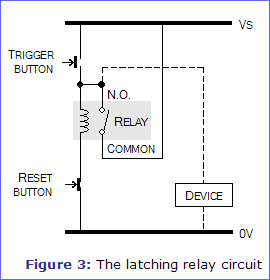CC Install
Grand Master Smitty installed an audiovox unit in my '05 during his recent L.A. tour last February. He finished the installation in a bit over 2 hours, IIRC, and it was a genuine pleasure to see someone who knows what they are doing doing what they know how to do.
Anyway, I'd opted out of getting Skyway's cool aluminum control pad mount, because, stacked atop the switch housing, it interferes with my Hippo Hands handlebar muffs. So I asked Smitty to install the CC control pad on a bracket he offers. It's much lower profile, but its placement required you to move your hand from the handlebar grip to operate, and it was always a bit of a distraction "hunting" for the button.
So I took a tip from earlier postings on this and other forums and junked the control pad in favor of a simple 3-way toggle switch. Easy to reach and its now a simple tactile operation with a fore finger, so the hand stays on the grip. Aesthetically pleasing as well.

Operation
Wired like this, the cruise control is always on (armed), but only engages when the switch is toggled. It is disengaged by operating the brakes or clutch. As I have it wired:
Toggle back (toward you) selects SET/COAST
Toggle forward (away from you) selects RESUME/ACCEL[/indent]
Parts
I ordered the following two items McMaster-Carr:
#7347K74: Miniature toggle switch, SPDT (on)-off-(on) rated at 4 amps @ 30V DC.
#70205K311: Toggle switch seal and boot, 1/4"-40 BUSHING SIZE, .59" Height, Grey.
But there are many other suppliers offering suitable switches.
Wiring
Snip off the six wires where they enter the control pad.
Only the brown (signal power), green (set), and yellow (resume) wires will need to carried to the toggle switch. The other wires between the control pad and the first electrical connector can be discarded.
Drill a 1/4" hole in the back of the clutch-side switch housing and mount the toggle switch. Weatherproof the hole with a sealant.
In order from bottom to top lug, solder the green, brown and yellow wires to the toggle switch. Insulate the solder joints with liquid electrical tape or equivalent.
In order to signal the servo that it is always on (armed), you will need to send +12v down the brown wire toward the servo. Easiest to do by bridging the red and brown wires. I used a handy Posi-Tap so I could "undo" it if I had to. But a solder joint would work as well.
All of this is carefully documented at the BestBits website
Grand Master Smitty installed an audiovox unit in my '05 during his recent L.A. tour last February. He finished the installation in a bit over 2 hours, IIRC, and it was a genuine pleasure to see someone who knows what they are doing doing what they know how to do.
Anyway, I'd opted out of getting Skyway's cool aluminum control pad mount, because, stacked atop the switch housing, it interferes with my Hippo Hands handlebar muffs. So I asked Smitty to install the CC control pad on a bracket he offers. It's much lower profile, but its placement required you to move your hand from the handlebar grip to operate, and it was always a bit of a distraction "hunting" for the button.
So I took a tip from earlier postings on this and other forums and junked the control pad in favor of a simple 3-way toggle switch. Easy to reach and its now a simple tactile operation with a fore finger, so the hand stays on the grip. Aesthetically pleasing as well.

Operation
Wired like this, the cruise control is always on (armed), but only engages when the switch is toggled. It is disengaged by operating the brakes or clutch. As I have it wired:
Toggle back (toward you) selects SET/COAST
Toggle forward (away from you) selects RESUME/ACCEL[/indent]
Parts
I ordered the following two items McMaster-Carr:
#7347K74: Miniature toggle switch, SPDT (on)-off-(on) rated at 4 amps @ 30V DC.
#70205K311: Toggle switch seal and boot, 1/4"-40 BUSHING SIZE, .59" Height, Grey.
But there are many other suppliers offering suitable switches.
Wiring
Snip off the six wires where they enter the control pad.
Only the brown (signal power), green (set), and yellow (resume) wires will need to carried to the toggle switch. The other wires between the control pad and the first electrical connector can be discarded.
Drill a 1/4" hole in the back of the clutch-side switch housing and mount the toggle switch. Weatherproof the hole with a sealant.
In order from bottom to top lug, solder the green, brown and yellow wires to the toggle switch. Insulate the solder joints with liquid electrical tape or equivalent.
In order to signal the servo that it is always on (armed), you will need to send +12v down the brown wire toward the servo. Easiest to do by bridging the red and brown wires. I used a handy Posi-Tap so I could "undo" it if I had to. But a solder joint would work as well.
All of this is carefully documented at the BestBits website
Last edited by a moderator:




